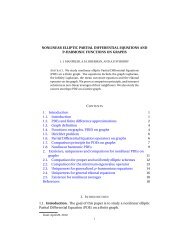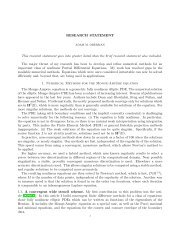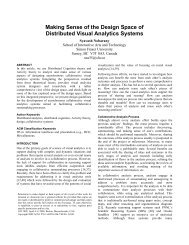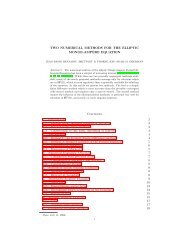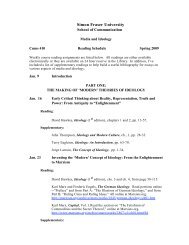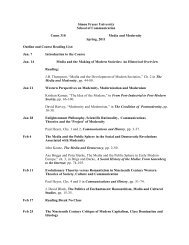Boyd Convex Optimization book - SFU Wiki
Boyd Convex Optimization book - SFU Wiki
Boyd Convex Optimization book - SFU Wiki
Create successful ePaper yourself
Turn your PDF publications into a flip-book with our unique Google optimized e-Paper software.
294 6 Approximation and fitting<br />
Sum of absolute residuals approximation<br />
When the l 1 -norm is used, the norm approximation problem<br />
minimize ‖Ax − b‖ 1 = |r 1 | + · · · + |r m |<br />
is called the sum of (absolute) residuals approximation problem, or, in the context<br />
of estimation, a robust estimator (for reasons that will be clear soon). Like the<br />
Chebyshev approximation problem, the l 1 -norm approximation problem can be<br />
cast as an LP<br />
minimize 1 T t<br />
subject to −t ≼ Ax − b ≼ t,<br />
with variables x ∈ R n and t ∈ R m .<br />
6.1.2 Penalty function approximation<br />
In l p -norm approximation, for 1 ≤ p < ∞, the objective is<br />
(|r 1 | p + · · · + |r m | p ) 1/p .<br />
As in least-squares problems, we can consider the equivalent problem with objective<br />
|r 1 | p + · · · + |r m | p ,<br />
which is a separable and symmetric function of the residuals. In particular, the<br />
objective depends only on the amplitude distribution of the residuals, i.e., the<br />
residuals in sorted order.<br />
We will consider a useful generalization of the l p -norm approximation problem,<br />
in which the objective depends only on the amplitude distribution of the residuals.<br />
The penalty function approximation problem has the form<br />
minimize φ(r 1 ) + · · · + φ(r m )<br />
subject to r = Ax − b,<br />
(6.2)<br />
where φ : R → R is called the (residual) penalty function. We assume that φ is<br />
convex, so the penalty function approximation problem is a convex optimization<br />
problem. In many cases, the penalty function φ is symmetric, nonnegative, and<br />
satisfies φ(0) = 0, but we will not use these properties in our analysis.<br />
Interpretation<br />
We can interpret the penalty function approximation problem (6.2) as follows. For<br />
the choice x, we obtain the approximation Ax of b, which has the associated residual<br />
vector r. A penalty function assesses a cost or penalty for each component<br />
of residual, given by φ(r i ); the total penalty is the sum of the penalties for each<br />
residual, i.e., φ(r 1 ) + · · · + φ(r m ). Different choices of x lead to different resulting<br />
residuals, and therefore, different total penalties. In the penalty function approximation<br />
problem, we minimize the total penalty incurred by the residuals.



